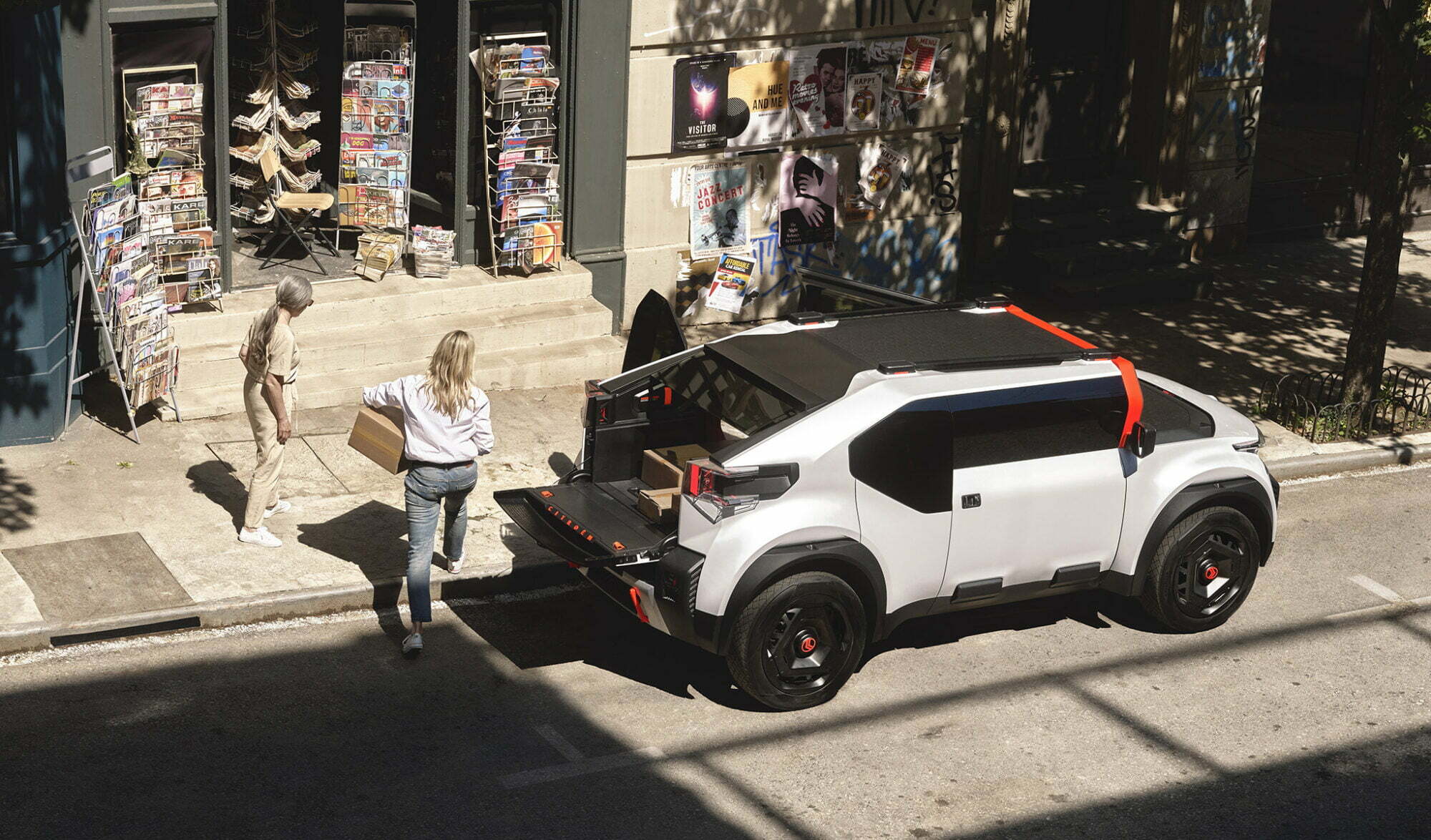Citroën has launched its new concept car the ‘oli’ at an event in Paris. The ‘oli’ is part of Citroën’s wider EV strategy and aims to reverse current industry trends by making vehicles lighter, less expensive and more accessible to the average consumer. Rather than being a 2500 kg ‘palace on wheels’ filled with screens and gadgets, the ‘oli’ will provide enough of the things customers need and want and meet the demand for inexpensive yet desirable zero-emission mobility solutions.
Citroën oli all-electric powertrain needs a 40kWh battery to deliver a target range of up to 400km. The vehicle’s max speed is 110km/h and recharging from 20% to 80% takes just 23 minutes. Its flat bonnet, roof and rear ‘pick-up bed’ panels are made from recycled corrugated cardboard that formed into a honeycomb sandwich structure between fiberglass. They are coated in Elastoflex® Polyurethane resin covered in a protective layer of tough, textured Elastocoat®, which is often used on parking decks or loading ramps, and painted with innovative, waterborne BASF R-M Agilis® paint.

Oli features an experimental “Aero Duct” system between the front section of the bonnet and the flat top panel which blows air towards the screen, creating a curtain effect to smooth airflow over the roof. Its windscreen is vertical with the frame finished in a bright ‘infra-red’ wrap, a new signature color the company will use in conjunction with a new brand identity.


The external door panel is designed to maximize interior storage. Large, horizontal windows are tilted slightly towards the ground to help to reduce the effects of the sun, and manual, easy-to-operate “flip up” pantograph opening sections. The narrower rear doors are hinged at the rear of the vehicle and use vertical glass to give rear passengers more light and visibility. The seats made of recycled materials and clever ‘mesh’ backrest designs enhance the natural light inside the vehicle.


Instead of the usual trunk or hatchback, oli unusual pick-up bed with trunk is designed for practicality and versatility. The independent rear seat headrests pop up into the roof, the rear screen glass opens upwards, and the flat 994mm wide removable load bed expands in length from 679mm to 1050mm.


The tailgate folds down and with the load bed panel removed, there is up to 582 mm height between the vehicle floor and the rear glass. With the panel in place, 330 mm height of trunk space is available below. The removable bed panel is made from the same recycled cardboard structure as the bonnet and roof panels.

Interior
Instead of a full dashboard with multiple screens and hidden computers, oli features a single symmetrical beam running across the width of the vehicle from which hangs the steering column and wheel on one side, a smartphone dock, and five toggle switches for the air conditioning system in the center. The beam houses an electrified rail into which accessories can be plugged via USB sockets that slide along it. There are two direct air vents, one each in front of the driver and passenger. Sitting behind and below the beam is the “sofa” made of BASF Elastollan® – a bright orange, recyclable 3D- printed Thermoplastic Polyurethane (TPU) storage shelf featuring flexible “mushrooms” which keep objects like coffee cups or soda cans in place.

Rear seat passengers can use the backrest’s exposed tubular frame to mount accessories – for example, a small tablet device powered via a USB socket, hooks for hanging a tote bag, a cupholder frame, a magazine net like in an airliner, or a small tray for the kids to enjoy a snack on the move. A discreet storage compartment for a first aid kit is on each side of the vehicle below the rear seats and accessible when rear doors are open.

Instead of carpets, oli features a single-piece, modular floor covering made in partnership with BASF from Expanded Thermoplastic PolyUrethane (E-TPU). The foam is as elastic as rubber but lighter. “This high-grade, high-performance material is usually found in the world of sport,” says Pierre Leclercq. “It is used in running tracks, bicycle saddles and even in the soles of well-known running shoes because of its spring and cushioning properties which can ‘boost’ performance and comfort on the track.”
Discover more from SNAP TASTE
Subscribe to get the latest posts sent to your email.



